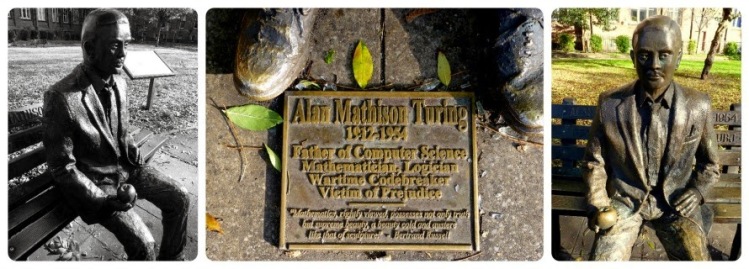Talking Statues is a project by Sing London designed to bring statues to life from across London and Manchester by giving them a voice. Each of the statues involved in the project is provided with a monologue, written and voiced by a collection of famous writers and actors. The viewer can scan the Talking Statues plaque usi
ng a smartphone and upon scanning, the viewer then receives a ‘phonecall’ from the statue. Talking Statues want to create an outlet for members of the public to connect with public art pieces that are often walked passed and unnoticed, and in the case of the less recognisable figures, most people will have no clue who they are or what relevance they once had.
The talking statues in Manchester are:
- Queen Victoria – Piccadilly Gardens
- Abraham Lincoln – Lincoln Square
- The Reading Girl – Manchester Central Library
- L.S. Lowry – Sam’s Chop House Pub
- Alan Turing – Sackville Gardens
- John Barbirolli – Bridgewater Hall
Overall, when personally using the application I found the technology to be very user friendly. The general idea is a great way of getting people engaged in the statues and with using technology to access heritage. I found very few problems with the project and most of the problems that I did encounter were with physical access to the Talking Statues plaques themselves. Despite being named as a Talking Statue on their website, I found myself very disappointed when I couldn’t find the Talking Statues plaque when visiting the Alan Turing figure in Sackville Gardens. I also found that some of them didn’t work or were placed in areas that weren’t very noticeable. The plaque for Queen Victoria is placed on the floor in front of the statue so as a consequence was only noticeable when the user actually walks directly up to the statue. Similarly with Lincoln, the plaque placement seemed a little silly; it was noticeable on the front of the plinth but was placed quite high up. To access the NFC chip with my phone, I had to stand on my toes just to reach the plaque. I feel this isn’t very user friendly especially for disabled people or younger users of the application.
However, overall I really enjoyed my experience of the Talking Statues project. Each statue is represented in a different way, owing to the different professionals that wrote and voiced them. I think each of the authors and the actors that were chosen for the project did a brilliant job of making the statues come to life and to be entertaining as well as informative. When listening to Queen Victoria I was amused to hear her speak about not enjoying the view and her plinth being very uncomfortable. I think this makes her much less intimidating and the inclusion of humour makes the talks much more enjoyable and less of a history lesson which is obviously more likely to keep people engaged. Each of the statues shows how they have a connection to Manchester, I think this is a very important aspect of the project as it educates the listener about their environment an d the possible previously unknown local histories.
d the possible previously unknown local histories.
These statues are often an integral part of their surroundings and some have been there for many years which I think makes them more accessible and engaging both to newcomers and regulars to the area. The project could easily reach out to tourists as it provides lots of information about the statues’ significance as well as background information about that particular historical person. However, I also think they are certainly interesting for locals because many people may walk past these statues daily and not know who they are or why they are there. It could serve to enrich their local knowledge and add something exciting to what was before an everyday addition to their local area.
The project definitely changes the perceptions of the statues and people’s interaction with them. Once they have been given a personality, the statues stop being viewed as art pieces because of the creation of a much more tangible connection with the people that they depict. The project also helps to facilitate more learning surrounding the subject manner of the statues. Many people who have viewed the statues previously and not known much about them may not then find themselves researching the statue later at home. This application provides direct access to learning, allowing people to access information about the statues instantly while still viewing the piece in person. I think the use of public projects such as Talking Statues is pivotal in engaging the community in public artworks as well as creating accessible art for a wider audience.


Reblogged this on msamba.
LikeLike